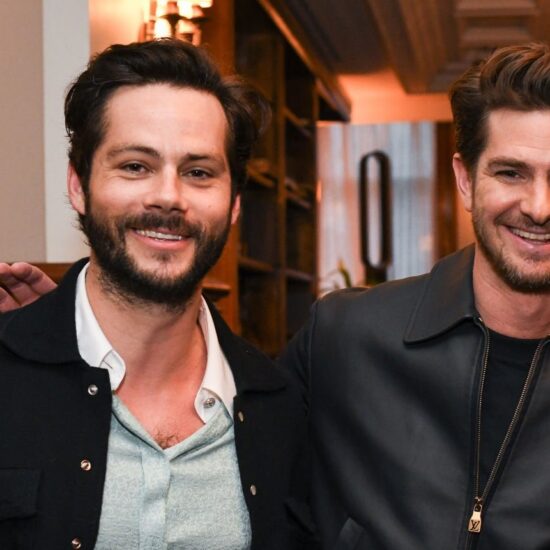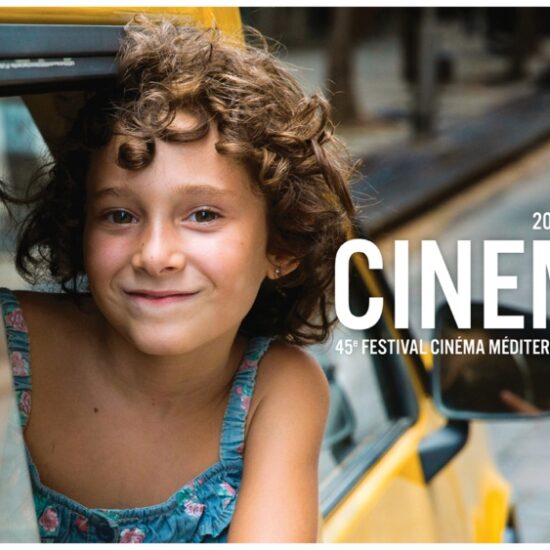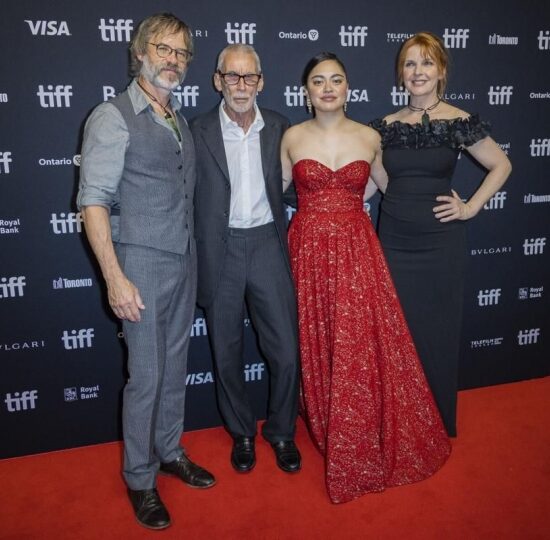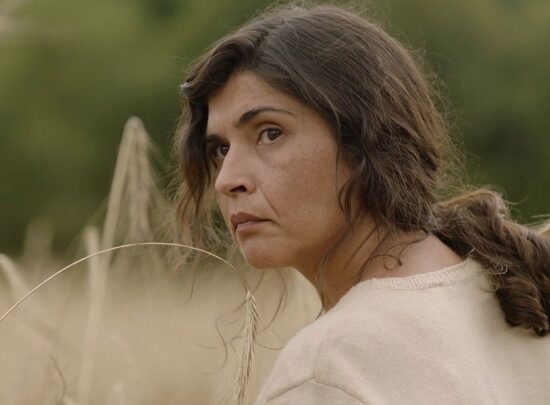
You have to be doing something awfully well for a lot of years to be known by your acronym. TIFF, or the Toronto International Film Festival , certainly qualifies. It has become the first must-attend event of the fall season for most US, European and, increasingly, Asian film professionals.
This year, TIFF drew over 5,000 industry delegates, a record breaker for the festival, and among them were 1,900 buyers. On the festival’s final day, it was announced that over 35 films had been sold internationally, including such docs as National Gallery, Frederick Wiseman’s incisive look at Britain’s prestigious art museum; Tales of a Grim Sleeper, Nick Broomfield’s dark study of a Los Angeles serial killer; The Look of Silence, Joshua Oppenheimer’s powerful follow-up to The Act of Killing; Sunshine Superman, Marah Strauch’s revelatory BASE-jumping feature; and The Price We Pay, Harold Crooks’ muckraking exposure of the corrupt global economy.
The documentary section of TIFF clearly benefits from the overall appeal of the festival. With huge attendance at screenings, healthy government support for both the public and industry sides of TIFF and increasing global coverage of the festival, it’s no wonder that just about anyone making a feature documentary targets Toronto in September as a great time to premiere their film.
As always, the selection of documentaries was top-notch. Besides the five films already cited, TIFF Docs included a duo centering on climate change, The Yes Men Are Revolting and Merchants of Doubt; a diverse quartet on the war zone that is the Middle East—This is My Land, The Wanted 18, Silvered Water, Syria Self Portrait and Iraqi Odyssey; two very different looks into Africa- National Diploma, the Congo-based indictment of corruption, and Beats of the Antonov, the People’s Choice Documentary Award-winning study of war and music in Sudan; a pair of films set in Asia–Monsoon and I Am Here; as well as docs taking place in Canada (Trick or Treaty?), Italy (Natural Resistance), Russia (Red Army) and the US (Seymour: An Introduction).
Besides offering viewers a nice opportunity to armchair-travel around the world, nothing much held the films together. But then, film programming for festivals isn’t the same as curating for a cinematheque. The philosophy of programming for an event like TIFF amounts to “find the best new films out there, and please don’t repeat themes or stories in too obvious a manner.” What’s wonderful for someone at TIFF—or the Berlinale or Cannes or Sundance or IDFA—is that everyone wants to submit to you and your festival; no salesmanship is necessary.
Jonathan Nossiter, whose Natural Resistance combined ecological concerns about making chemical and additive free wine with a quirky set of clips from older Italian films, would surely attest that some years produce vintage grapes and excellent libations. So it is with films and it’s clear that this is a good year for feature docs. The range was astonishing.
Take Sturla Gunnarsson’s Monsoon, for example. It is a gloriously pictorial meditation on India, emphasizing the extreme contrasts in a land of deserts and floods, mountaintops and verdant farmland, cities teeming with humanity and villages where no one is a stranger to their neighbors. Using the immense chaos that the monsoon engenders, Gunnarsson has been able to convey some of the complexity of one of the greatest countries in the world.

Lixin Fan’s I Am Here has already been released in China, where it grossed over $1 million at the box office. The film focuses on a “Chinese Idol” reality show called Super Boy, which pits ten young men against each other to deliver the greatest performance of the TV season. Millions watch Super Boy, and the contestants are hounded like true celebrities—at least for a while. Fan got to spend time with the young men, who are an appealing, almost naïve group. Contrasting upbeat, high-tempo songs with amazing production values to the quietly intense life that the boys spend training for their TV appearances, Fan is able to convey a sense of the unreality of the situation—and its potential for triumph or heartbreak.
In Merchants of Doubt, Robert Kenner follows up his controversial and very well reviewed feature doc Food, Inc. with an unsparing attack on those in the US who oppose legislation to stop climate change. Kenner is adept at structuring arguments in ways that are witty and devastating; he is a fine essayist and polemicist. Like Food, Inc., Merchants of Doubt is based on a book, this time by Naomi Oreskes and Eric M. Conway.
Kenner foregrounds Merchants of Doubt with repeated appearances of a magician, Jamy Ian Swiss, who demonstrates how tricks are created by misdirection. Kenner shows how tobacco companies used the same technique for decades to “blow smoke” over correct allegations that cigarettes are harmful to people’s health.
Misdirection, the film makes clear, is being applied now to climate change. Kenner points out that the vast majority of scientists believe that climate change is happening but certain figures in US politics, bolstered by oil and gas money, are causing enough doubt in the public’s mind to prevent legislation from occurring. Merchants of Doubt is a powerful indictment of gas and oil companies, the beneficiaries of the “debate” that is still happening today.
The Wanted 18 tackles another major topic—the conflict between Israeli authorities and the Palestinians. Set during the first Intifada in the late 1980s, the film relates one of those crazy documentary stories that can only work because it’s true. With the Israeli occupation at its height, Palestinians in the West Bank town of Beit Sahour were bereft of dairy products. Town leaders bought 18 cows and set up a collective farm to answer a basic need-to have milk.
The Israelis tried to seize the cows, only to find that they’d disappeared into the mountains and rough terrain in the area. Countless attempts proved unsuccessful as the cows and their Palestinian farmers became masters at finding new, inaccessible spots where they could hide—leaving the milk to flow and the Israelis to become angrier and angrier. This amazing tale is recreated by Palestinian artist Amer Shomali and veteran Canadian doc director Paul Cowan, using stop-motion animation, interviews and drawings to illustrate how people can survive nearly anything if they have imagination and faith.

The strongest film I saw at TIFF was The Look of Silence, Joshua Oppenheimer’s documentary about Adi, an optometrist who decides to confront the killers of Ramli, an older brother he never met but whose memory was worshipped by his parents. Like so many others, Ramli was accused of being a Communist and brutally murdered in the mid-1960s, when Indonesia destroyed its democratic left, at the behest of the US government. This documentary couldn’t have been better cast: Adi is perfect as the anonymous accuser of Indonesian “heroes”—murderers who feign remorse and refuse to take any moral responsibility for their actions. When Adi’s quiet, determined mien transforms into a scowl with his eyes aflame, the former death squad members get angry and threaten him with violence if he doesn’t abandon his “communist” line of thinking. Few films have ever exposed the face of evil so effectively, or as aesthetically. This unofficial sequel to The Act of Killing is brilliant.

Oppenheimer was the highlight of the Doc Conference, speaking passionately and poetically about his experiences working in Indonesia. Filmmaker Astra Taylor (Zizek!) was also provocative and well spoken, offering a somewhat jaundiced view of the Internet and its power to influence democratic thought. The Conference ended with Hot Docs Forum Director Elizabeth Radshaw presenting the results of an audience survey conducted by Hot Docs. Her takeaways were clear: viewers of docs are highly educated and mainly female, and would support more documentaries if they knew where to find them.
The task ahead in Toronto is obvious: figure out how to attract a public when Hot Docs and TIFF Docs aren’t in town. Easier said than done.
Based in Toronto, Marc Glassman is editor of Point of View magazine and Montage magazine.














